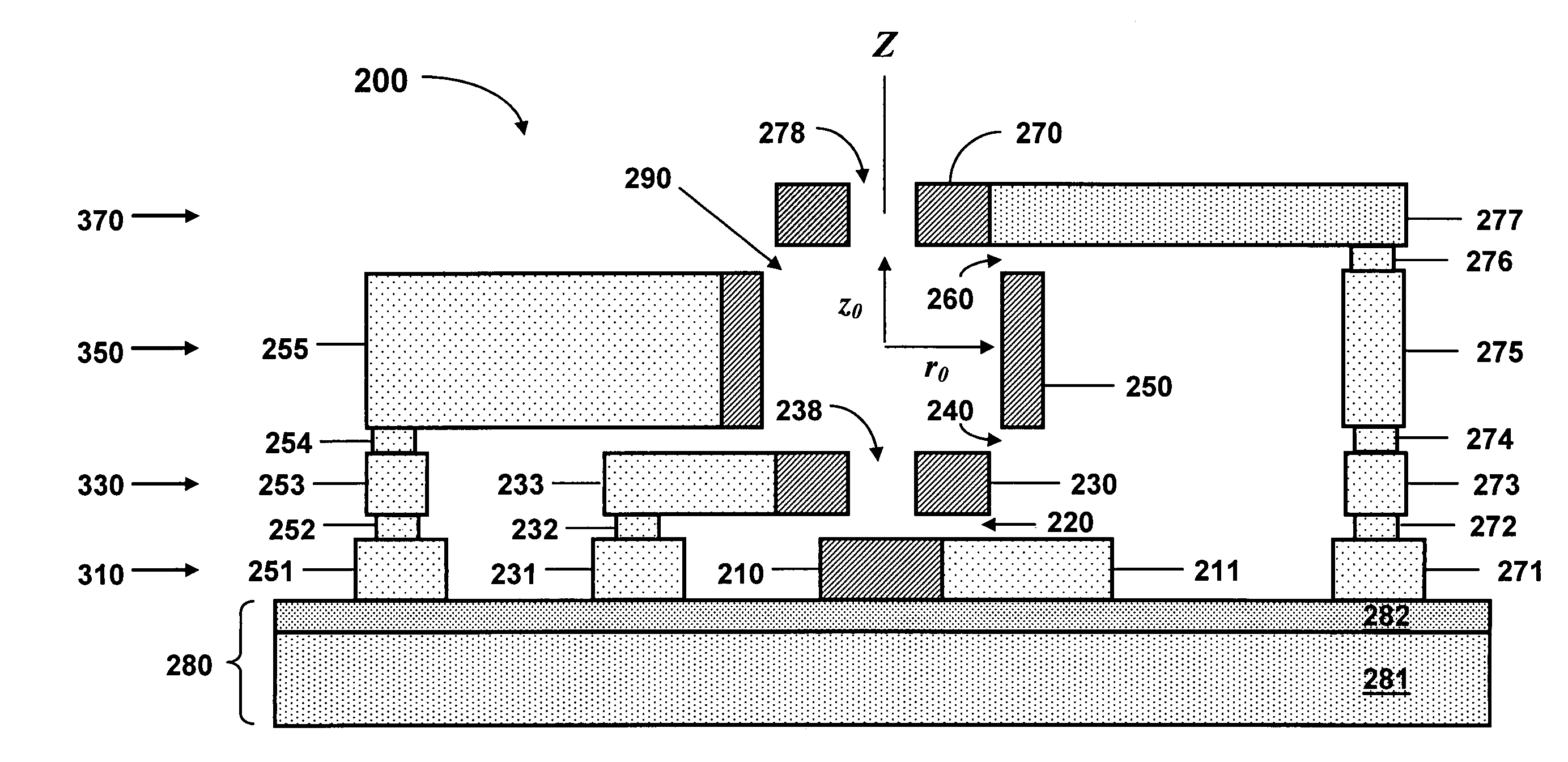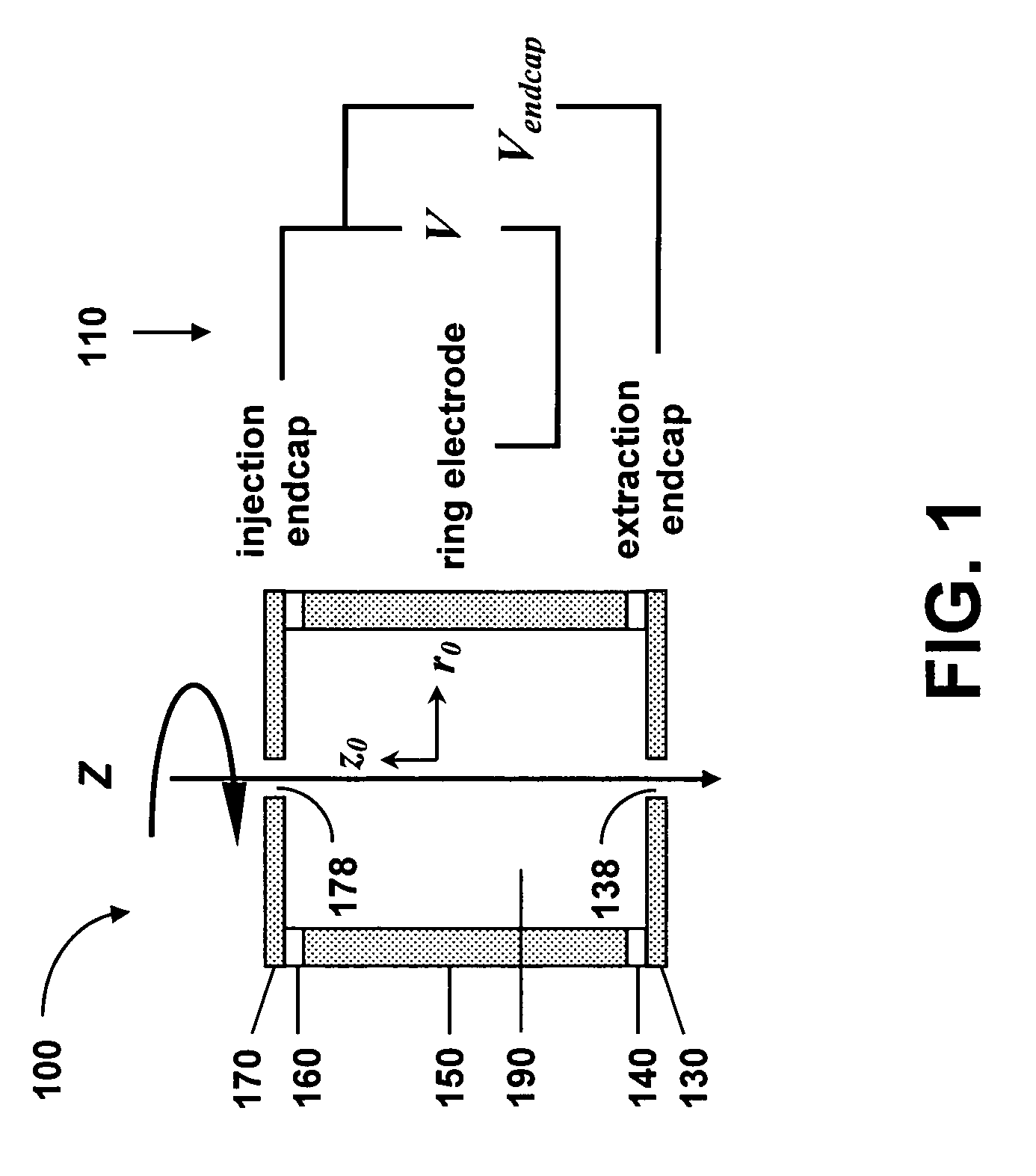Microfabricated ion trap array
- Summary
- Abstract
- Description
- Claims
- Application Information
AI Technical Summary
Benefits of technology
Problems solved by technology
Method used
Image
Examples
Embodiment Construction
[0040]In FIG. 1 is shown a schematic illustration of a single CIT 100 comprising a cylindrical ring electrode 150, two planar endcap electrodes 130 and 170, and endcap dielectric spacers 140 and 160 between the center ring electrode 110 and the endcap electrodes 130 and 170. Ions are trapped in the intraelectrode trapping volume 190 defined by the cylindrical ring electrode 150 and the endcap electrodes 130 and 170. Apertures 178 and 138 can be provided in the endcap electrodes 170 and 130 for injection of a neutral or ionized sample gas into and ejection of the ions out of the trapping volume 190. The CIT 100 is rotationally symmetric about the axial Z axis. r0 is the inner radius of the ring electrode 150 and z0 is the center-to-endcap distance. The CIT 100 can be energized by a power source 110 that provides a rf drive voltage V between the ring electrode 150 and the endcap electrodes and a dc or rf voltage Vendcap between the two endcap electrodes 170 and 130 for trapping of the...
PUM
 Login to View More
Login to View More Abstract
Description
Claims
Application Information
 Login to View More
Login to View More - R&D
- Intellectual Property
- Life Sciences
- Materials
- Tech Scout
- Unparalleled Data Quality
- Higher Quality Content
- 60% Fewer Hallucinations
Browse by: Latest US Patents, China's latest patents, Technical Efficacy Thesaurus, Application Domain, Technology Topic, Popular Technical Reports.
© 2025 PatSnap. All rights reserved.Legal|Privacy policy|Modern Slavery Act Transparency Statement|Sitemap|About US| Contact US: help@patsnap.com



